Sakushima Flowers
January
【Japanese Camellia】
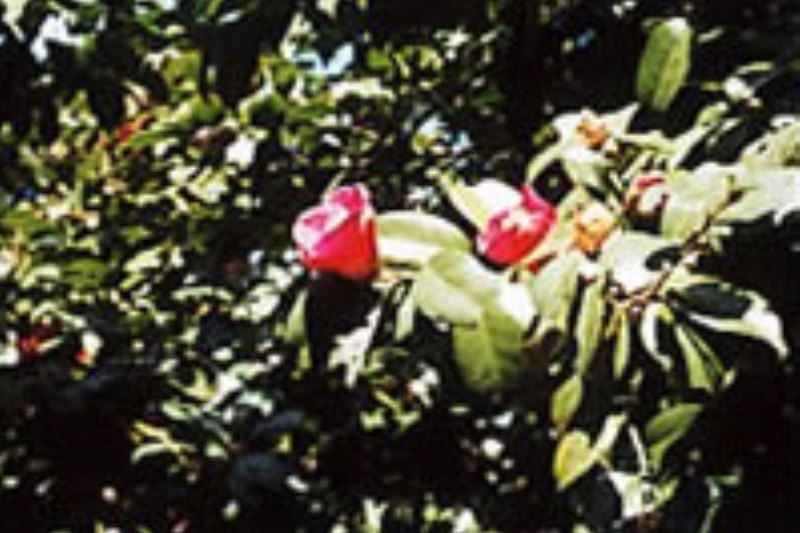
Around the beginning of April every year, some tunnels of Japanese camellia flowers appear on the woodland Satoyama Landscape walking trails.
Underfoot, pink petals color the ground. It is as glossy as a velvet carpet.
Only at this time of the year the woods, which are usually filled with the quiet spirit of the forest, transform into this gorgeous space.
Underfoot, pink petals color the ground. It is as glossy as a velvet carpet.
Only at this time of the year the woods, which are usually filled with the quiet spirit of the forest, transform into this gorgeous space.
【Native Daffodil】
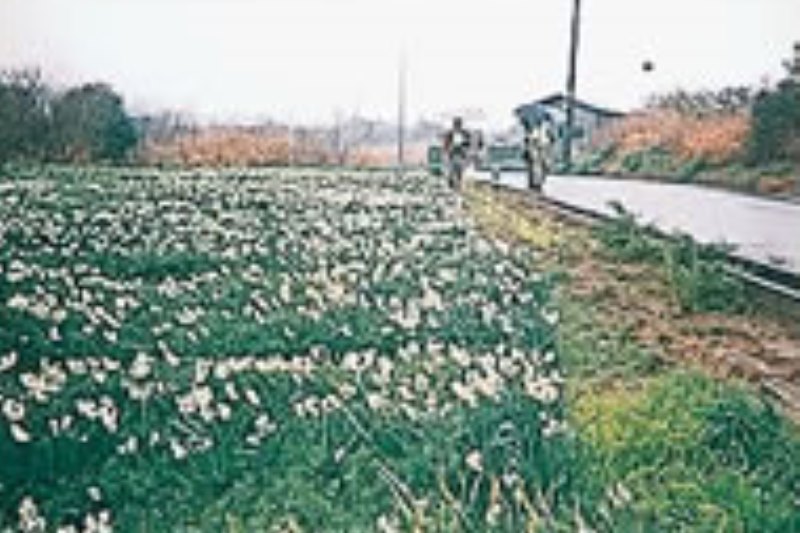
The daffodil is a symbol of Sakushima.
Islanders carefully dug up the bulbs of native daffodils that grew in the island’s mountains and carefully hand-raised them.
It is also called the “snow flower” because it blossoms fragrantly even in the snow, and its perfume has an excellent calming effect.
It’s the perfect symbol for a soothing island.
Islanders carefully dug up the bulbs of native daffodils that grew in the island’s mountains and carefully hand-raised them.
It is also called the “snow flower” because it blossoms fragrantly even in the snow, and its perfume has an excellent calming effect.
It’s the perfect symbol for a soothing island.
February
【Plum Blossoms】
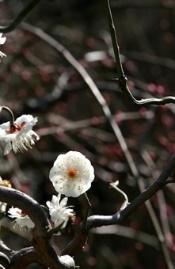
The plum is an early-blooming flower, one of the early signs of spring that we can sense.
Plum blossoms have a more subdued and elegant feel than the gorgeous cherry blossoms.
The faint scent of plums at night is called “Night-time Incense”.
There is a plum grove in the process of being established at Oshima Park on Sakushima.
It will become a park brimming with flowers someday.
Plum blossoms have a more subdued and elegant feel than the gorgeous cherry blossoms.
The faint scent of plums at night is called “Night-time Incense”.
There is a plum grove in the process of being established at Oshima Park on Sakushima.
It will become a park brimming with flowers someday.
March
【Japanese Wild Radish】
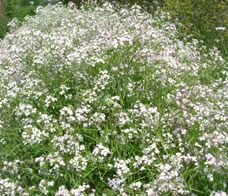
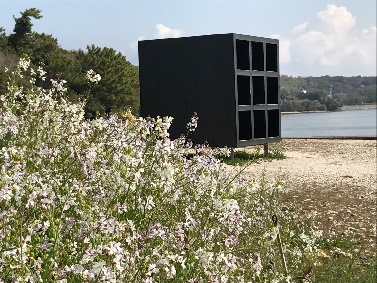
At the height of spring, clusters of Japanese wild radish cover the coasts of Tannashi Beach and Shigake Beach.
In particular, the scenery at Ohirune House as it bursts in bloom is a must-see.
In Japan, the wild radish has pale pink flowers with a purplish flush, but in North America they also have yellow and white flowers.
In particular, the scenery at Ohirune House as it bursts in bloom is a must-see.
In Japan, the wild radish has pale pink flowers with a purplish flush, but in North America they also have yellow and white flowers.
【Wild Cherry Blossoms】
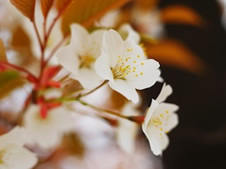
They are typical types of wild cherry tree that have been popular since ancient times on Sakushima.
Although the color of the flowers ranges from white to pale pink, the color of the buds varies, coloring the mountainside beautifully.
Although the color of the flowers ranges from white to pale pink, the color of the buds varies, coloring the mountainside beautifully.
April
【Japanese Cobra Lily】
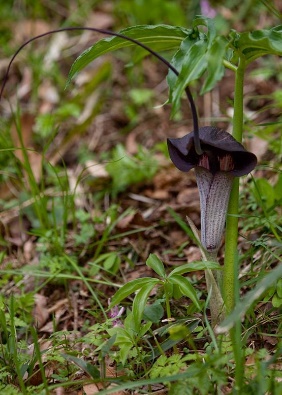
Despite the spring being at its peak, the Japanese Cobra Lily blooms unobtrusively in the corners of the cool forest.
Something like a long, thin string extends from the tip of the purple flower, creating a mysterious atmosphere.
It was called “Urashimasou” (Urashima plant) in Japanese because it was said to resemble folktale character Urashima Taro’s fishing line.
Something like a long, thin string extends from the tip of the purple flower, creating a mysterious atmosphere.
It was called “Urashimasou” (Urashima plant) in Japanese because it was said to resemble folktale character Urashima Taro’s fishing line.
【Mamushigusa】
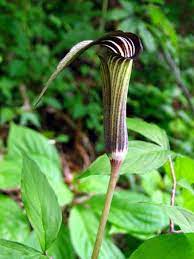
The mamushigusa (lit. viper plant), also known as the variegate jack-in-the-pulpit, grows on moist forest floors in the mountains and fields.
It is a perennial plant with many variations in form that grows to a height of 50-60cm.
The corm of the plant is flat and round, and it is located underground.
Its false stem (pseudostem) has a mottled purple-brown pattern and is formed by the overlapping of the two leaf sheaths at the base of the leaf stalk (petiole).
The plant’s name comes from its resemblance to a viper.
Its bulbs are poisonous.
It is a perennial plant with many variations in form that grows to a height of 50-60cm.
The corm of the plant is flat and round, and it is located underground.
Its false stem (pseudostem) has a mottled purple-brown pattern and is formed by the overlapping of the two leaf sheaths at the base of the leaf stalk (petiole).
The plant’s name comes from its resemblance to a viper.
Its bulbs are poisonous.
May
【Beach Morning Glory】
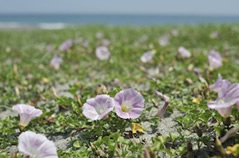
Beach morning glory blooms with pink flowers along the sandy beach coast from late spring to early summer.
Growing in clusters and nodding their heads in the sea breeze, they have an elegant atmosphere.
It is a perennial vine with long, crawling stems in the sand.
Growing in clusters and nodding their heads in the sea breeze, they have an elegant atmosphere.
It is a perennial vine with long, crawling stems in the sand.
June
【Seashore Pink】
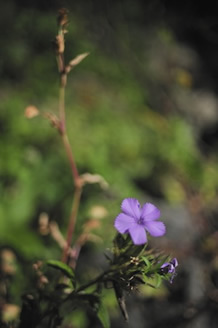
This Dianthus variety grows along the rocky and grassy areas along the coast from summer to autumn.
As it grows along the beach, it is called “beach morning glory”, but due to its mauve coloring it is also known as a “mauve dianthus”.
It has a shallow zigzag notch at the tip of its petals, and the leaves have the thickness and glossiness of a typical beach plant.
As it grows along the beach, it is called “beach morning glory”, but due to its mauve coloring it is also known as a “mauve dianthus”.
It has a shallow zigzag notch at the tip of its petals, and the leaves have the thickness and glossiness of a typical beach plant.
【Bamboo Lily】
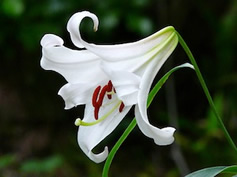
This lily exclusively grows in Japan. Along with the Golden rayed Lily, it is representative of Japanese lilies. It grows mixed with wild bamboo and has a faint scent. Its thin leaves look like bamboo leaves, so it was named the “Bamboo Lily”. Another name for it in Japanese is “Sayuri”.
【Canna】
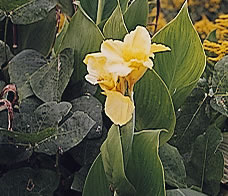
As summer arrives, red and yellow flowers bloom along the island’s main road (called Ichi-gosen, but also known as “Flower Road”).
Cannas are found in the tropics all over the world. In India, it is said that this flower grew and blossomed from spots where Buddha’s blood soaked into the soil.
Cannas are found in the tropics all over the world. In India, it is said that this flower grew and blossomed from spots where Buddha’s blood soaked into the soil.
July
【Tiger Lily】
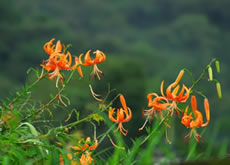
Tiger Lily flowers are about 10cm in diameter, with black-purple spots on the inside of the petals.
This flower looks very similar to Leichtlins’ Lily, and it can be difficult to distinguish the two by looking just at the flowers.
However, the Tiger lily has a bulb at the base of its leaves called a bulbil.
The bulbil is edible.
This flower looks very similar to Leichtlins’ Lily, and it can be difficult to distinguish the two by looking just at the flowers.
However, the Tiger lily has a bulb at the base of its leaves called a bulbil.
The bulbil is edible.
【Four-o’clock】
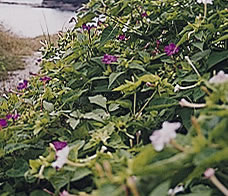
The cute flowers of this Mirabilis variety can be seen all over the island from summer and autumn.
It was called “Oshiroibana” (white-powder flower) in Japanese because children would crush the fruit and play make-up with it.
It is called four-o’clock in English because the flowers remain closed throughout the day, and open at around 4 o’clock in the afternoon.
It was called “Oshiroibana” (white-powder flower) in Japanese because children would crush the fruit and play make-up with it.
It is called four-o’clock in English because the flowers remain closed throughout the day, and open at around 4 o’clock in the afternoon.
August
【Square-stem Statice】
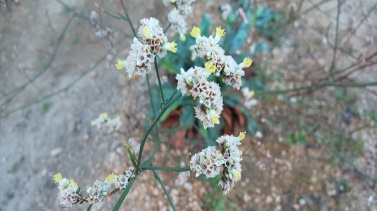
It has been designated as a near-threatened species in Aichi Prefecture. Nowadays, it is rarely seen along the Mikawa coastline.
Its Japanese name, “hamasaji”, (lit. beach spoon) comes from the resemblance of its leaves to spoons, and the fact that it grows along the beach.
Its Japanese name, “hamasaji”, (lit. beach spoon) comes from the resemblance of its leaves to spoons, and the fact that it grows along the beach.
【Thunberg’s Smartweed】
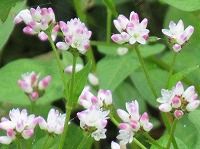
Five small flowers with no petals gather and bloom on the tips of stems or on the edges of the spear-shaped leaves, like Japanese mari balls.
The tips of the white calyxes (the leaf-like protrusions around the base of flowers) are tinged slightly crimson.
It is thought that the flower’s Japanese name, “mizo-soba” (lit. swamp buckwheat) comes from the fact that the plant grows in damp places such a ditches, and that its seeds look similar to the seeds of the buckwheat plant.
The tips of the white calyxes (the leaf-like protrusions around the base of flowers) are tinged slightly crimson.
It is thought that the flower’s Japanese name, “mizo-soba” (lit. swamp buckwheat) comes from the fact that the plant grows in damp places such a ditches, and that its seeds look similar to the seeds of the buckwheat plant.
【Okahijiki】
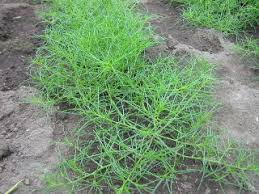
Sometimes called saltwort in English, this is an annual plant that grows along sandy beaches.
In Japanese, “oka” means land.
The plant’s Japanese name comes from its resemblance to a type of seaweed called “hijiki” but growing on the land.
Although hijiki is brown (it only turns black after being boiled in an iron kettle) and okahijiki is green, it really does look a lot alike.
In Japanese, “oka” means land.
The plant’s Japanese name comes from its resemblance to a type of seaweed called “hijiki” but growing on the land.
Although hijiki is brown (it only turns black after being boiled in an iron kettle) and okahijiki is green, it really does look a lot alike.
【Lilyturf】
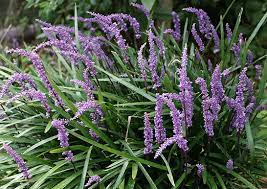
Lilyturf is an evergreen perennial plant.
This plant has the same grassy look almost all year round, is highly resistant, hardy, and requires almost no care.
As a result, it has been a long-standing popular planting material for gardens and landscapes.
Its long, leathery leaves are supple and firm. It grows long spikes from August to October then blossoms with bluish-purple to white flowers.
This plant has the same grassy look almost all year round, is highly resistant, hardy, and requires almost no care.
As a result, it has been a long-standing popular planting material for gardens and landscapes.
Its long, leathery leaves are supple and firm. It grows long spikes from August to October then blossoms with bluish-purple to white flowers.
【Orange Daylily】
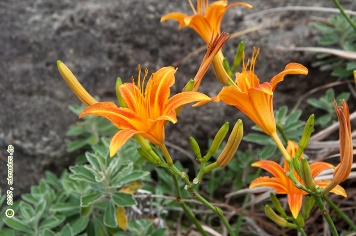
The orange daylily is a coastal type of day-lily, an evergreen perennial plant that grows along the beach. It is usually found along coastal cliffs, but also grows in sandy areas.
As it an evergreen plant, it can be easily distinguished from the closely related tawny day-lily by the fact that it does not lose its leaves during the winter.
However, it is indistinguishable while in bloom.
Here, the orange daylily grows where the sea-breeze blows.
As it an evergreen plant, it can be easily distinguished from the closely related tawny day-lily by the fact that it does not lose its leaves during the winter.
However, it is indistinguishable while in bloom.
Here, the orange daylily grows where the sea-breeze blows.
September
【Green Leopard Plant】
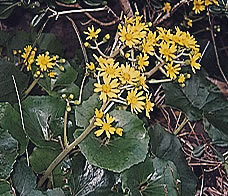
This plant’s Japanese name, “tsuwabuki” comes from the words “tsuya” (gloss) and “fuki” (butterbur).
It means “butterbur with glossy leaves”.
Its yellow flowers bloom along the coastal cliffs and roadsides from late autumn to early winter.
The petioles (leaf stalks) are edible and can be used in tsukudani (kyarabuki) and herbal medicines.
It means “butterbur with glossy leaves”.
Its yellow flowers bloom along the coastal cliffs and roadsides from late autumn to early winter.
The petioles (leaf stalks) are edible and can be used in tsukudani (kyarabuki) and herbal medicines.
【Fragrant Eupatorium】
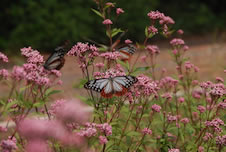
The fragrant eupatorium is one of seven quintessential Japanese autumn flowers.
This flower has been popular since ancient times.
Although it can be found all over the island, it was recently planted in the valley for the travelling Chestnut Tiger butterflies, who love to drink its nectar.
It has pretty light purple flowers.
This flower has been popular since ancient times.
Although it can be found all over the island, it was recently planted in the valley for the travelling Chestnut Tiger butterflies, who love to drink its nectar.
It has pretty light purple flowers.
【Azetouna】
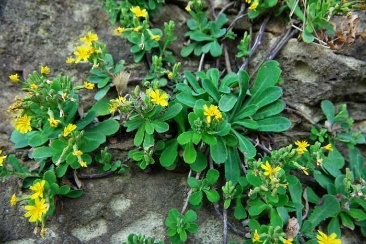
The azetouna, a kind of Asian daisy, is a perennial plant that grows in the rocky areas along the pacific coast west of the Izu Peninsula.
Its short, thick stem is like a rhizome (the underground part of a plant’s stem that stores nutrients) with radical leaves (leaves which grow from the base of the stem).
Its oval-shaped radical leaves are about 3 -10cm long and 1-2 cm wide. Dense yellow flowers that are about 1.5cm in diameter grow at the tips of its shoots.
Its short, thick stem is like a rhizome (the underground part of a plant’s stem that stores nutrients) with radical leaves (leaves which grow from the base of the stem).
Its oval-shaped radical leaves are about 3 -10cm long and 1-2 cm wide. Dense yellow flowers that are about 1.5cm in diameter grow at the tips of its shoots.
【Red Spider Lily】
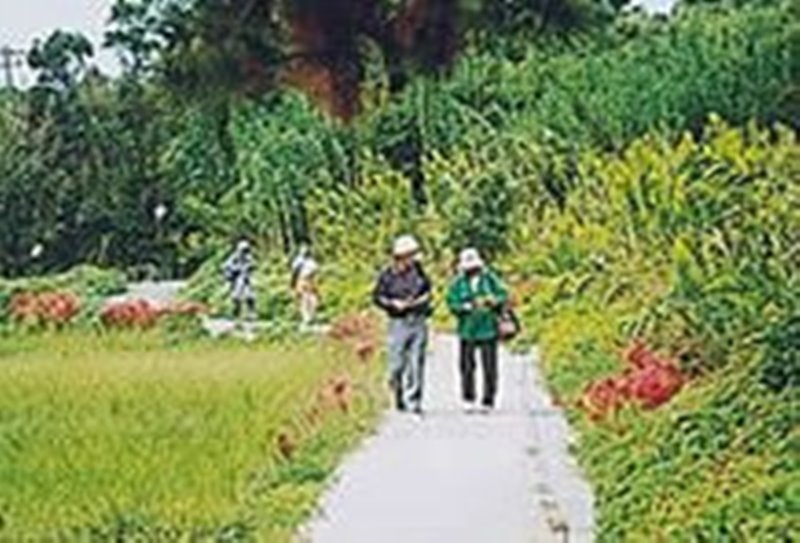
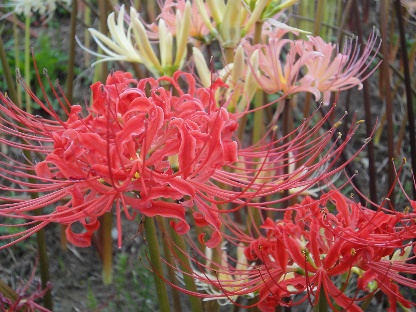
Around the Autumn Equinox, the red spider lily colors the small area from the Island’s village to the mountains in red.
Its short life is like a flame that quickly burns up.
This flower has many names, but the most well-known is probably “manjushage” (in English, “cluster amaryllis”), which means “the red flower of the heavenly world”.
Its short life is like a flame that quickly burns up.
This flower has many names, but the most well-known is probably “manjushage” (in English, “cluster amaryllis”), which means “the red flower of the heavenly world”.
【Skunk Vine】
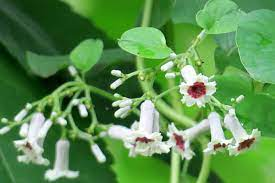
As the name suggests, this perennial plant has a distinct odor.
Although its proper name in Japanese is “yaitobana” and it is also known as “saotomebana”, the most famous name for this plant is “hekusokazura” (lit. fart smell vine), for obvious reasons.
Putting aside the smell, the flowers that bloom in the summer are quite pretty.
In fact, its flowers are red, shiny, and can also be used to make tea.
Although its proper name in Japanese is “yaitobana” and it is also known as “saotomebana”, the most famous name for this plant is “hekusokazura” (lit. fart smell vine), for obvious reasons.
Putting aside the smell, the flowers that bloom in the summer are quite pretty.
In fact, its flowers are red, shiny, and can also be used to make tea.
【Hamasaotomekazura】
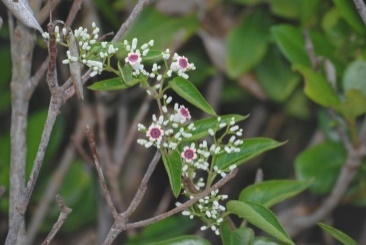
A coastal variety of the skunk vine, this plant is characterized by its thick, glossy leaves.
It also has the name “yaitobana” because the purplish-red color at the heart of the flower looks like the color of the smouldering moxas in the traditional medicine practice of “yomogi”, Japanese moxibustion.
It also has the name “yaitobana” because the purplish-red color at the heart of the flower looks like the color of the smouldering moxas in the traditional medicine practice of “yomogi”, Japanese moxibustion.
November
【Silver Grass】
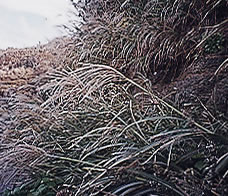
In the late autumn when the cold sea breeze starts to seep into your body, the silver grass sways, rustling, all over the island, as if encouraging the islanders to get ready for winter.
The silver grass on the island, which hangs its head low and battles the wind somehow feels more like toughness than an atmospheric presence.
The silver grass on the island, which hangs its head low and battles the wind somehow feels more like toughness than an atmospheric presence.
December
【Sasanqua Camellia】
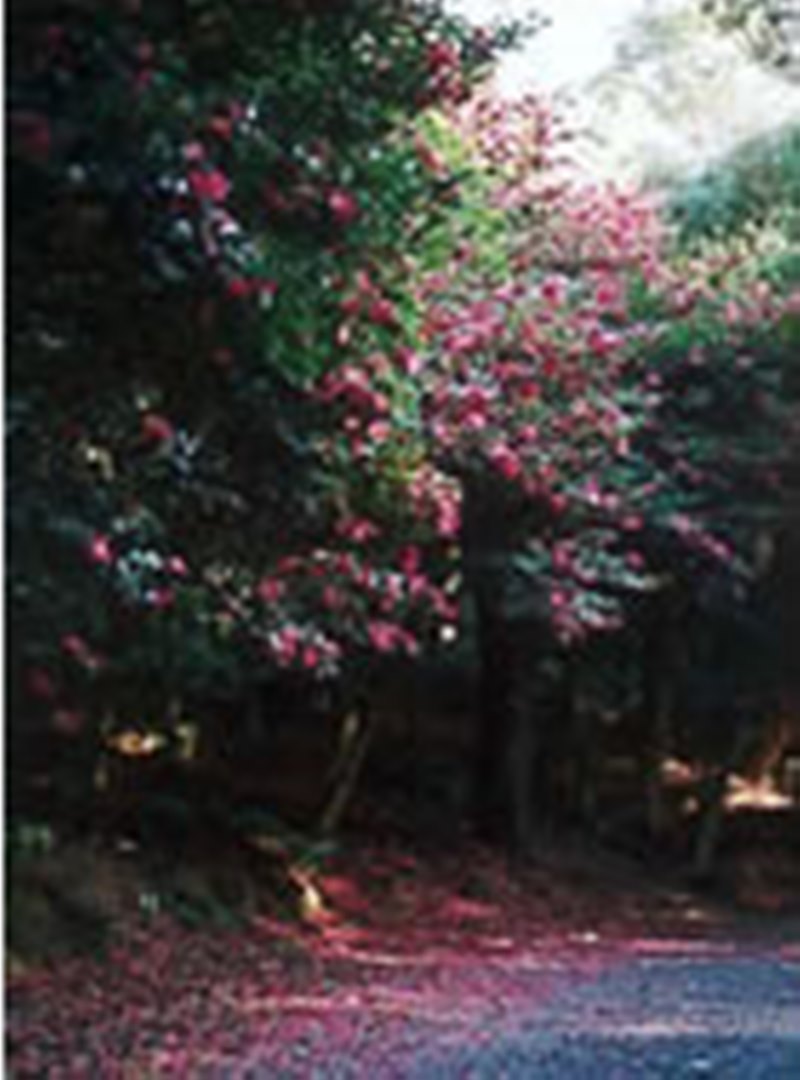
When the trees have completely shed their red and yellow trappings and their branches are shaken by the cold, wintry wind, the sasanqua camellia shows its lustrous blossoms along the approach to Hakusan Shrine.
This bright pink flowers stand out brilliantly against the stark grove of trees.
When the sasanqua camellia petals dance in the breeze, it is finally winter on Sakushima.
This bright pink flowers stand out brilliantly against the stark grove of trees.
When the sasanqua camellia petals dance in the breeze, it is finally winter on Sakushima.
Stories about Flowers
A flower to forget about the pain of love (Orange Daylily)

“Michi shiraba tsumi ni mo yukan Sumie no kishi ni ouchou koi-wasuregusa” (lyrics from a sumikechiuta [waka/poem that appears in the “Kokin Wakashu” that were written in but were obscured with ink, so that the original poem can still be read] by Ki no Tsurayuki).
It means, “If you know the way, you can go and get some flowers that will help you to forget your love, but I just can’t forget you”.
The love-forgetting plant that appears in this poem blooms on the cliffs along Sakushima’s coast from around July.
This flower looks like a lily and is called “hamakanzo” in Japanese.
It is also known as “wasuregusa” or “forgetting-plant”.
It is called that because it is such a beautiful flower that you will forget whatever is upsetting you.
It also meant forget sadness, forget melancholy in Japanese flower language, because it was said to do so in waka poems composed by the people of the Manyo period.
Orange Daylilies only bloom for one day, blossoming in the morning and wilting in the evening.
The plant is about 70-90cm tall and has thick, shiny leaves.
3-6 orange-red flowers bloom upwards at the end of each stem.
The buds and roots are also medicinal, and the leaves are edible.
Think of the Manyo period and look for the Orange Daylily that blooms on the island.
It means, “If you know the way, you can go and get some flowers that will help you to forget your love, but I just can’t forget you”.
The love-forgetting plant that appears in this poem blooms on the cliffs along Sakushima’s coast from around July.
This flower looks like a lily and is called “hamakanzo” in Japanese.
It is also known as “wasuregusa” or “forgetting-plant”.
It is called that because it is such a beautiful flower that you will forget whatever is upsetting you.
It also meant forget sadness, forget melancholy in Japanese flower language, because it was said to do so in waka poems composed by the people of the Manyo period.
Orange Daylilies only bloom for one day, blossoming in the morning and wilting in the evening.
The plant is about 70-90cm tall and has thick, shiny leaves.
3-6 orange-red flowers bloom upwards at the end of each stem.
The buds and roots are also medicinal, and the leaves are edible.
Think of the Manyo period and look for the Orange Daylily that blooms on the island.
“Travelling Butterflies” and the yellow autumn of Sakushima


Strong winds blow on the island from the sea in the season from October.
Chestnut Tiger butterflies come from as far away as Fukushima, riding on the wind.
The Chestnut tiger butterfly, also known as the “Travelling Butterfly”, is known to travel from the southern islands to the northern mountains in the spring, and back south in the autumn.
For several reasons, Sakushima is an important place for them along their journey.
“The green leopard plant, which blooms in the Mt.Oyama forest north of the harbor, is about 20cm across and produces 10 to 30 round flowers that look similar to chrysanthemums.
Male Chestnut Tiger butterflies only drink nectar from certain flowers which contain a special substance that they use to produce pheromones to attract the female butterflies.
Because the flowers of the green leopard plant contain this substance, Sakushima is an important stop along the way for chestnut Tiger butterflies.
The autumn on this island is all yellow.
In addition to the green leopard plant, other yellow flowers such as “Azetouna” and Pacific chrysanthemums bloom on the island.
Enjoy the different color and feeling of autumn with its tiny visitors, the Chestnut Tiger Butterflies.
Chestnut Tiger butterflies come from as far away as Fukushima, riding on the wind.
The Chestnut tiger butterfly, also known as the “Travelling Butterfly”, is known to travel from the southern islands to the northern mountains in the spring, and back south in the autumn.
For several reasons, Sakushima is an important place for them along their journey.
“The green leopard plant, which blooms in the Mt.Oyama forest north of the harbor, is about 20cm across and produces 10 to 30 round flowers that look similar to chrysanthemums.
Male Chestnut Tiger butterflies only drink nectar from certain flowers which contain a special substance that they use to produce pheromones to attract the female butterflies.
Because the flowers of the green leopard plant contain this substance, Sakushima is an important stop along the way for chestnut Tiger butterflies.
The autumn on this island is all yellow.
In addition to the green leopard plant, other yellow flowers such as “Azetouna” and Pacific chrysanthemums bloom on the island.
Enjoy the different color and feeling of autumn with its tiny visitors, the Chestnut Tiger Butterflies.




























